What is going on in my brain after a concussion?
A concussion cannot be seen on an X-ray, CT or MRI. So, what exactly is going on in the brain?
Think of people doing “the wave” at a sporting event. One person lifts their arms in the air and then the person next to them does the same thing. Once a person lifts their arms, they then lower their arms and wait for the wave to come back around to them.
This is similar to when a nerve passes a message along. A nerve passes its message (lifts its arms) and then requires energy to reset itself (lower its arms) and wait for the next message. After a concussion, there is a lack of energy in the system. So, the nerve becomes unable to reset its ability to pass a message. This is like a person getting stuck with their arms in the air when doing the wave because they do not have the energy required to lower them.
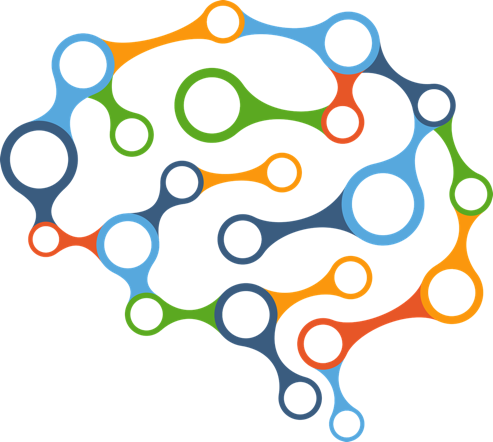
A nerve must have reset itself to be able to pass along the next message it receives. Imagine a section of people stuck with their hands in the air when “the wave” comes along to them. The wave continues as normal until it hits the section of people with their arms already in the air. The people on the far side of the “stuck section” do not know that a message arrived on its opposite side, so they do not start to lift their arms to pass along the message. Similarly, a message cannot be passed through a section of a nerve that has not reset itself. Messages either need to find a detour or wait for the nerve to reset itself.
There are several reasons there is a lack of energy for the nerves following a concussion. First, there has been damage done to the efficient energy making systems in the brain, so energy will be created through a much slower system. Second, there is a decrease in the blood supply to the brain. This means that the available energy will be delivered slower than normal. Third, there is some swelling in the nerves which will affect their ability to transport energy to where it needs to go.
The decrease in speed it takes for messages to be passed along results in concussion symptoms. These changes take 7-10 days to resolve after sustaining a concussion, even if a person is not experiencing symptoms past the first day of receiving a concussion.
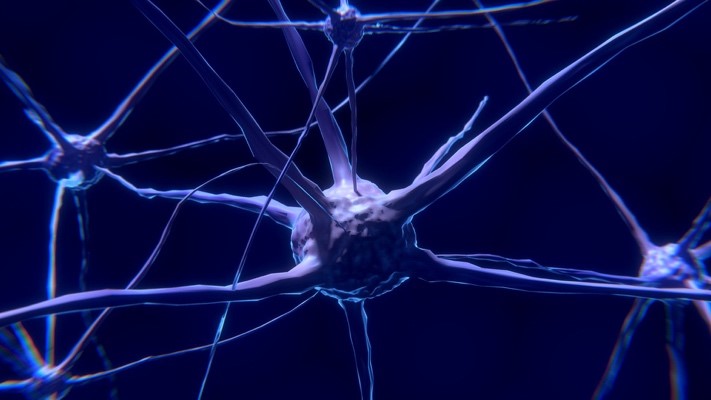
The brain is more vulnerable to a second injury before it has fully resolved from the first concussive force. This risk does not correlate to the severity of the initial concussion, the time interval between head injuries, or the amount the brain has resolved its energy deficiency after its initial concussion. Even if a person is not experiencing any concussion symptoms, if they are within 7-10 days of receiving a concussion, they are more vulnerable to receiving a second more serious concussive injury. Therefore, it is very important to wait at least a full week before returning to normal game play, and the appropriate procedures to return to school, work and play should be followed.
What kinds of things can be treated following a concussion?
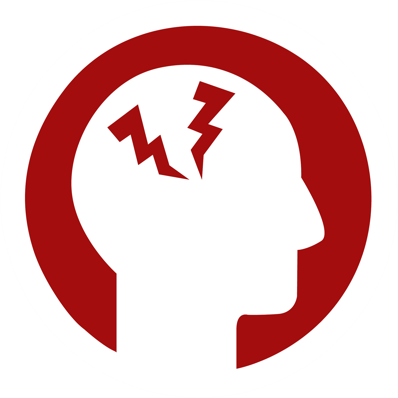
When a concussion is received, a variety of body systems can be affected because the brain is connected to everything. Each person’s concussion is different because different areas or numbers of areas in the brain may be impacted. One or more of the following symptom areas could be affected.
Symptoms that should be addressed early on are:
- Depression, anxiety, irritability, or other mood changes
- Sleep disorders
- Post-traumatic headache
- Neck and back injuries
- Any other bone, muscle, or ligament injuries sustained when the concussion occurred
Additional symptom areas to be addressed include:
- Balance
- Dizziness/vertigo or other vestibular impairments
- Cognitive Impairments
- Fatigue
- Tinnitus/noise intolerance
- Visual impairments
- Exercise intolerance
Many things can contribute to persistent post-concussion symptoms. If you are experiencing persistent symptoms, a thorough assessment should be performed by a concussion specialist to determine how to guide your rehabilitation. Some examples of concussion specialists are trained physicians, physiotherapists, athletic therapists, kinesiologists, chiropractors, and occupational therapists.
What does recovery after a concussion look like?
Clinical recovery post-concussion is defined as a resolution of post-concussion symptoms at rest and at exercise, normal balance, and normal cognitive functioning.
Most concussions resolve within 10-14 days for adults, and 2-4 weeks for children and teenagers. Teenagers take longer to recover than children, and females take longer to recover than males. There is some evidence to indicate that teenagers who are 13-14 years old are the most vulnerable to having persistent concussion symptoms.
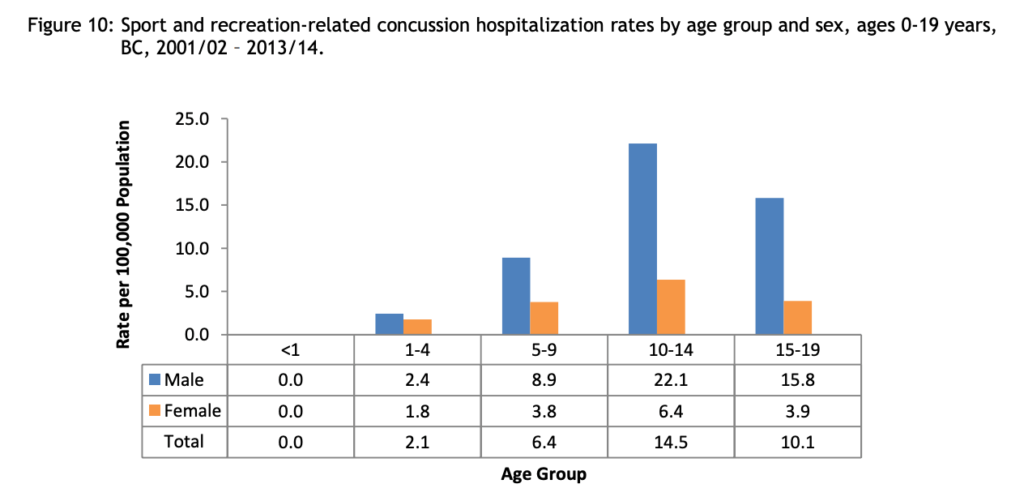
The best predictor of a person’s recovery timeline is their immediate symptoms after experiencing a concussive force. Loss of consciousness and vomiting following a concussion has been shown to correlate with a quicker recovery. Immediate dizziness post concussive impact is the biggest predictor of taking longer to recover. Most people will recover in the expected time frame even if they experienced immediate dizziness.
A concussion diagnosis is most easily established within the first two days of receiving a concussive force, even if a person is not exhibiting obvious concussion symptoms. Following day two, most people have recovered enough that the basic tests will no longer clearly indicate whether they received a concussion or not. Ideally, if there is any suspicion that a person has a concussion, they should receive screening tests from a concussion specialist within the first two days of their injury. Following day two, a concussion diagnosis can still be made. However, this diagnosis will rely more heavily on residual symptoms or a higher level of neuropsychological testing.
The best treatment following a concussion is relative physical and mental rest. Complete rest from activity is not recommended after 48 hours post-concussion. Relative rest, where activities that do not make symptoms worse are performed, is recommended. High risk sport participation is prohibited within 7-10 days post-concussion as athletes are at an increased risk of a second concussion during this time. Sleeping is important for healing. A person who has a concussion should be allowed to sleep normally without being disturbed.
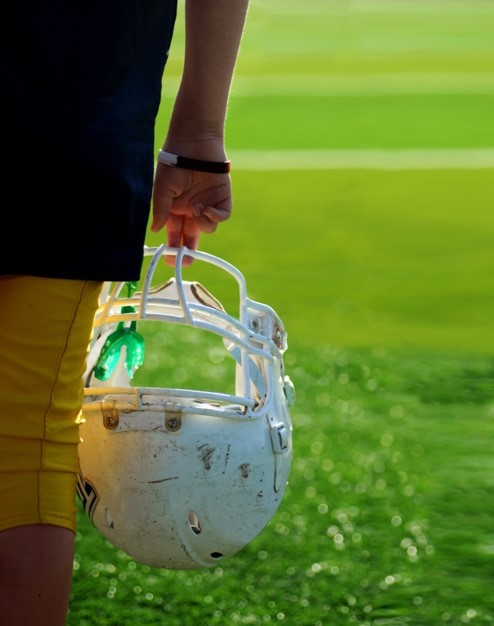
A person with concussion symptoms in the initial 2-4 weeks of their recovery should not perform activities that make their symptoms worse. This includes playing sports, exercising, and performing activities that require mental concentration such as reading. When symptoms have reduced, returning to work, school and exercise should happen gradually. This is a multi-step process and could start the day after receiving a concussion if a person is no longer experiencing any concussion symptoms. If no aggravation of symptoms occurs during a gradual return to sports, normal levels of activity will be reached within six days. Students should be able to fully participate in school before returning to normal game play.
The return to school and work stages are as follows:
- Cognitive and physical rest (24-48 hours maximum)
- Light cognitive activity
- School/work type work at home, light physical activity
- Part time school/work with a light load and maximum accommodations
- Part time school/work with a moderate load and moderate accommodations
- Full time school/work with minimal accommodations
- Full time school/work with no accommodations
The return to sport stages are as follows:
- No sporting activity
- Light aerobic exercise
- Sport specific exercise with no contact
- Non-contact training drills
- Full contact practice
- Normal game play
A person with a concussion should be regularly followed up with by a concussion specialist until they have clinically recovered. Generally, a concussion diagnosis and initial symptom evaluation will be performed as soon as a concussion is suspected. Follow up appointments should occur at 1-2 weeks and 3-4 weeks post-concussion, depending on how symptoms are resolving. Additional appointments may be required during this time if additional injuries require treatment, such as an ankle or neck sprain. If clinical recovery has not occurred in the expected time frame for an individual, they should receive multidisciplinary care for their remaining symptoms.
Author: Laura Schuiling – MPT, BSc, FCAMPT, IMS/FDN
Giza and Hovda. The new neurometabolic cascade of concussion. Neurosurgery. 2014: 4, 24-33.
Guideline for concussion/mild traumatic brain injury & persistent symptoms. https://braininjuryguidelines.org/concussion/
Lau et al. Which on-field signs/symptoms predict protracted recovery from sport-related concussion among high school football players? Am J of Sports Med. 2011: 39, 2311-18.
McCrea et al. Standard regression-based methods for measuring recovery after sport-related concussion. J of International Neuropsych Society. 2005: 11: 58-69.
Schneider et al. Rest and treatment/rehabilitation following sport-related concussion: A systematic review. Br J Sports Med. 2017: 51, 930-34.
Signoretti et al. The pathophysiology of concussion. PM&R. 2011: 3, 359-68.
Standards for post concussion care: From diagnosis to the interdisciplinary concussion clinic. ONF. 2017.
Rajabali F, Turcotte K, Pike I, Babul S. Concussion among Children and Youth in British Columbia: An Update. Vancouver, BC: BC Injury Research and Prevention Unit; 2016.